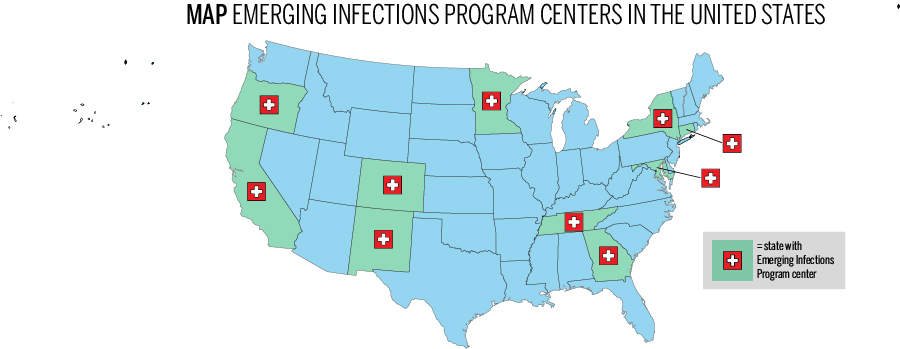
The Connecticut Emerging Infections Program, a partnership between the Yale School of Public Health and the Connecticut Department of Public Health, has received a five-year, $14 million grant from the Centers for Disease Control and Prevention.
The program focuses on monitoring infectious pathogens. Program directors plan to use this funding to increase the impact of the program’s work, which has taken place since 1995. The Connecticut EIP is one of 10 centers in as many states across the country partnered with the CDC for this purpose.
“The YSPH community is privileged to work with the Connecticut health authorities and the CDC on this vital work,” said Sten Vermund, the dean of the Yale School of Public Health. “Infectious diseases are not merely exotic conditions of faraway lands. They are major threats to Connecticut residents, whether acquired in the community, in a health care setting or in travel.”
The researchers at the EIP do state-of-the-art surveillance of pathogens to try and identify the number of cases of certain diseases, the national burden of the diseases and the effectiveness of the prevention measures, according to professor of epidemiology and EIP director Robert Heimer. This includes tracking the effectiveness of vaccination programs, he added.
Among the infections the program tracks are Lyme disease, influenza and cervical cancers that are the result of human papilloma virus.
“In Connecticut, we estimate there are at least 10,000 cases of one of these infectious diseases in the state every year, some of which can be quite lethal, some of which … can have a very heavy financial or health burden, many of which are preventable,” Heimer added. “So we want to monitor and track them.”
The researchers also look at infections that spread in a variety of ways, including hospital-acquired infections, food-borne illnesses and tick-borne diseases. This allows Heimer and others to track risk factors for contracting one of these diseases, he said.
State Epidemiologist at the Connecticut Department of Public Health Matthew Cartter said the EIP is particularly relevant due to the changing illnesses in the state and in the world.
“Societal, technological and environmental factors continue to have a dramatic effect on infectious diseases worldwide, facilitating the emergence of new diseases and the reemergence of old ones, sometimes in drug-resistant forms,” Cartter said. “These surveillance data are used to generate reliable estimates of the incidence of these infections and provide the starting point for further exploration of risk factors, spectrum of disease and better strategies for prevention and control.”
Cartter added that the ability to partner with the nine other centers in the EIP network provides the Connecticut EIP the ability to examine large-scale trends.
Beyond the research component, the EIP provides opportunities for graduate students at the School of Public Health to gain experience in working with infectious diseases.
“This has been a fabulous opportunity for our master’s students and even some of our doctoral students to learn about real public health practice and to get experience in understanding how disease control and prevention efforts can be accomplished by combining surveillance with evaluation and research,” Heimer said.
Heimer expressed interest in looking at whole-genome sequencing and new generation sequencing methods over the next five years as a way of replacing culturing and identifying outbreaks “in real time.”
The EIP will receive $4.1 million during the first year of the new funding.







